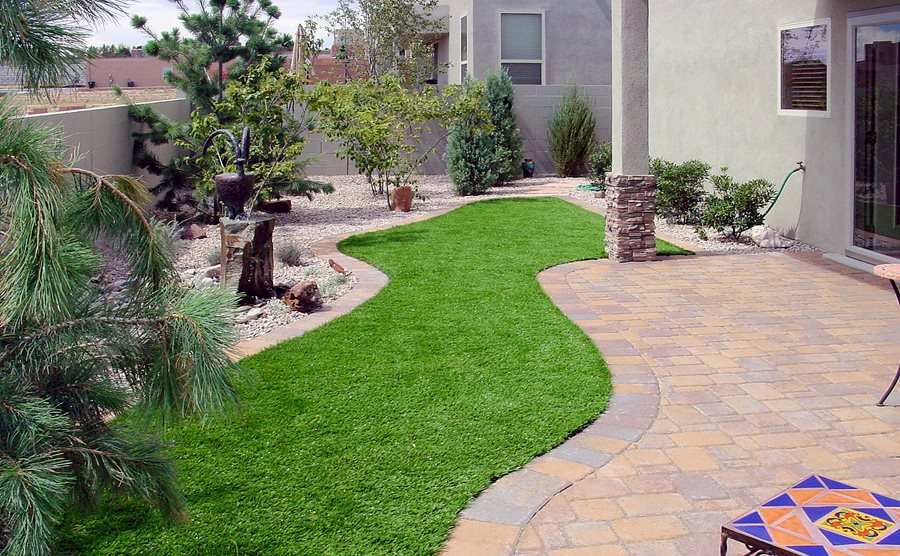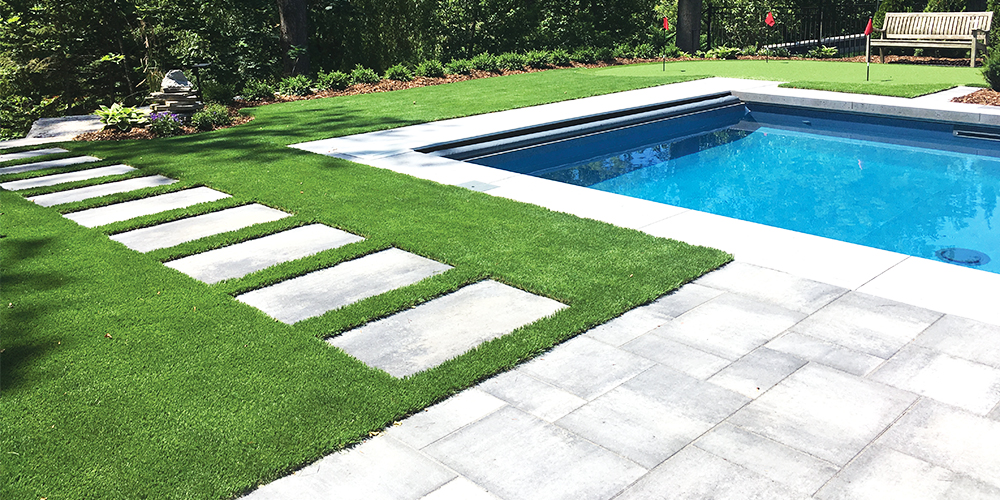Explore the Environmental Perks of Opting for Artificial Lawn Solutions
The fostering of man-made turf options presents an engaging chance to resolve pressing ecological difficulties. By substantially reducing water usage and lessening the application of dangerous chemicals, these choices not just advertise lasting landscaping but also secure regional ecological communities. Furthermore, the lower carbon footprint related to decreased upkeep tasks adds to an extra sustainable approach to land monitoring. The ramifications of these benefits prolong beyond plain preservation efforts, elevating concerns regarding their long-lasting influence on habitat preservation and total eco-friendly equilibrium. Checking out these dimensions reveals an intricate interplay worth thinking about.
Water Conservation Benefits
One of the most considerable benefits of fabricated grass is its capability to preserve water. Conventional lawn yards require substantial watering, particularly in areas prone to drought or water constraints. In contrast, fabricated grass does not require watering, considerably reducing the overall need for water resources. This attribute is specifically advantageous in deserts where water deficiency is a pressing concern.
By getting rid of the requirement for regular watering, synthetic grass adds to sustainable landscape methods and assists alleviate the environmental impact of extreme water intake. The conservation of water extends to the decrease of runoff, which can lead to soil disintegration and waterway air pollution.
Furthermore, the installation of synthetic grass enables homeowners and municipalities to assign water sources a lot more efficiently, focusing on necessary usages such as alcohol consumption water and farming. The change towards synthetic grass not just promotes responsible water usage however likewise straightens with more comprehensive ecological objectives focused on maintaining natural deposits.
As communities increasingly focus on sustainability, the water conservation benefits of artificial lawn present an engaging situation for its fostering in domestic and business landscape design tasks.
Minimized Chemical Use
The shift to synthetic grass substantially lowers the reliance on chemical treatments generally utilized in natural lawn maintenance. Typical grass management commonly involves the application of chemicals, plant foods, and herbicides to advertise development and control parasites. These chemicals can pose threats to human health and wellness, neighborhood wildlife, and the setting, adding to soil and water contamination.
On the other hand, artificial lawn removes the demand for these hazardous compounds. Once set up, it needs minimal maintenance, largely being composed of normal cleaning and irregular infill replenishment. This decrease in chemical use not only benefits the prompt atmosphere however likewise contributes to wider environmental stability. By minimizing the release of synthetic substances right into the community, synthetic grass advertises healthier soil and water supply.
In addition, the lack of chemical runoff connected with synthetic grass setups assists shield local waterways from contamination, supporting water life and keeping biodiversity. Turf installation phoenix az. As communities significantly focus on lasting methods, going with synthetic lawn presents a practical solution that lines up with environmental conservation objectives. Via this change, property owners can take pleasure in lavish green spaces without endangering ecological health and wellness, paving the way for a much more sustainable future
Lower Carbon Footprint

Additionally, the installment of synthetic grass can result in substantial water preservation. All-natural grass call for significant quantities of water for watering, which not just includes in the carbon impact additional resources related to water removal and therapy however likewise pressures neighborhood water resources. On the other hand, synthetic grass requires minimal upkeep, requiring no watering, consequently substantially minimizing water use and its connected energy costs.
Furthermore, the durability of synthetic grass contributes to its reduced carbon impact. With a life-span of up to 15 years or more, the requirement for frequent replacements is diminished, leading to much less waste and reduced power consumption in manufacturing and throwing away typical turf choices. In general, synthetic grass offers a sustainable choice for ecologically aware landscaping.
Habitat Conservation
Habitat preservation is an important consideration in the dispute over landscape design choices, especially when comparing synthetic grass to natural yard. All-natural yard yards frequently need considerable maintenance, consisting of using chemicals, fertilizers, and herbicides, which can negatively impact neighborhood ecological communities. These chemicals can leach into the dirt and official site waterways, harming native vegetation and fauna and interrupting local environments.
In contrast, synthetic grass presents an opportunity to minimize the ecological impact of landscape design. By selecting synthetic turf, house owners can reduce the disruption of all-natural habitats connected with typical lawn care practices. Man-made lawn gets rid of the demand for harmful chemicals, thereby protecting nearby wildlife and preserving the stability of surrounding ecological communities. The installment of fabricated turf can lead to the conversion of former yard locations right into even more biodiverse landscapes, such as pollinator yards or indigenous plant areas, which can support neighborhood wildlife.
Inevitably, the shift to synthetic grass not just conserves water and minimizes maintenance initiatives but also fosters a much more unified relationship in between human tasks and the natural surroundings, promoting environment conservation in the process.
Long-Term Sustainability
Long-term sustainability is a critical element in assessing the benefits of synthetic grass over typical yard yards. Among one of the most substantial benefits of artificial turf is its sturdiness; it can last as much as 15-20 years with minimal upkeep, whereas all-natural yard calls for frequent reseeding and replacement. This long life lowers the need for continuous sources, such as water, fertilizers, and pesticides, which are vital for maintaining a healthy and balanced turf yard.
In addition, synthetic grass adds to a decrease in carbon discharges linked with grass care equipment. Standard grass often need gas-powered lawn mowers, trimmers, and blowers, every one of which add to air pollution. Arizona artificial turf. On the other hand, synthetic grass removes the need for such equipment, promoting a cleaner setting
Additionally, the manufacturing of synthetic grass increasingly uses recycled materials, improving its sustainability account. As producers take on green methods, the ecological footprint of synthetic turf proceeds to decrease.

Final Thought
The fostering of synthetic grass solutions presents considerable environmental benefits, including considerable water conservation, minimized browse around here reliance on unsafe chemicals, and a lower carbon footprint. Fabricated turf aids in maintaining natural environments by reducing land disturbance and advertising long-lasting sustainability via the usage of sturdy materials. Jointly, these aspects emphasize the possibility of synthetic grass to add favorably to environmental wellness and supply a practical choice to typical landscaping practices in an increasingly resource-conscious world.
In comparison, artificial turf does not need watering, significantly reducing the general demand for water sources. By decreasing the launch of synthetic substances into the environment, fabricated turf promotes healthier dirt and water systems.
Moreover, the installment of fabricated turf can result in considerable water conservation. In comparison, artificial turf needs very little maintenance, calling for no watering, thus dramatically reducing water usage and its associated energy costs.
